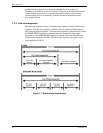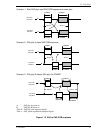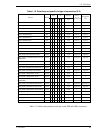
SAS Interface
38 C141-C013
1.3.5.1 Exception handling in the OOB sequence
• When the COMINIT signal cannot be detected
When a drive sends the COMINIT signal but the COMINIT signal from the
other side cannot be detected, the drive waits for the reception of the
COMINIT signal from the INIT or expander until the hot-plug timeout time
(500 ms) elapses. If the hot-plug timeout time elapses before the COMINIT
signal from the other side has been received, the drive sends the COMINIT
signal again to start a new link reset sequence. If the drive receives the
COMSAS signal while waiting for the COMINIT signal, it sends the
COMSAS signal and takes the OOB sequence as having been performed
successfully in spite of the fact that it has not received the COMINIT signal.
• When the COMSAS signal cannot be detected
When a drive sends the COMSAS signal but the COMSAS signal from the
other side cannot be detected, the drive waits for the reception of the
COMSAS signal from the INIT or expander until the hot-plug timeout time
(500 ms) elapses. If the hot-plug timeout time elapses before the COMSAS
signal from the other side has been received, the drive sends the COMSAS
signal again to start a new link reset sequence.
1.3.6 SAS speed negotiation sequence
The SAS speed negotiation sequence is a peer-to-peer negotiation technique that
does not assume initiator and target (i.e., host and device) roles. The sequence
consists of a set of speed negotiation windows for each physical link rate, starting
with 1,5 Gbps, then 3,0 Gbps, then the next rate. The length of the speed
negotiation sequence is determined by the number of physical link rates supported
by the phys.
Figure 1.11 defines the speed negotiation window, including:
a) speed negotiation window time;
b) rate change delay time (RCDT);
c) speed negotiation transmit time (SNTT); and
d) speed negotiation lock time (SNLT).


















